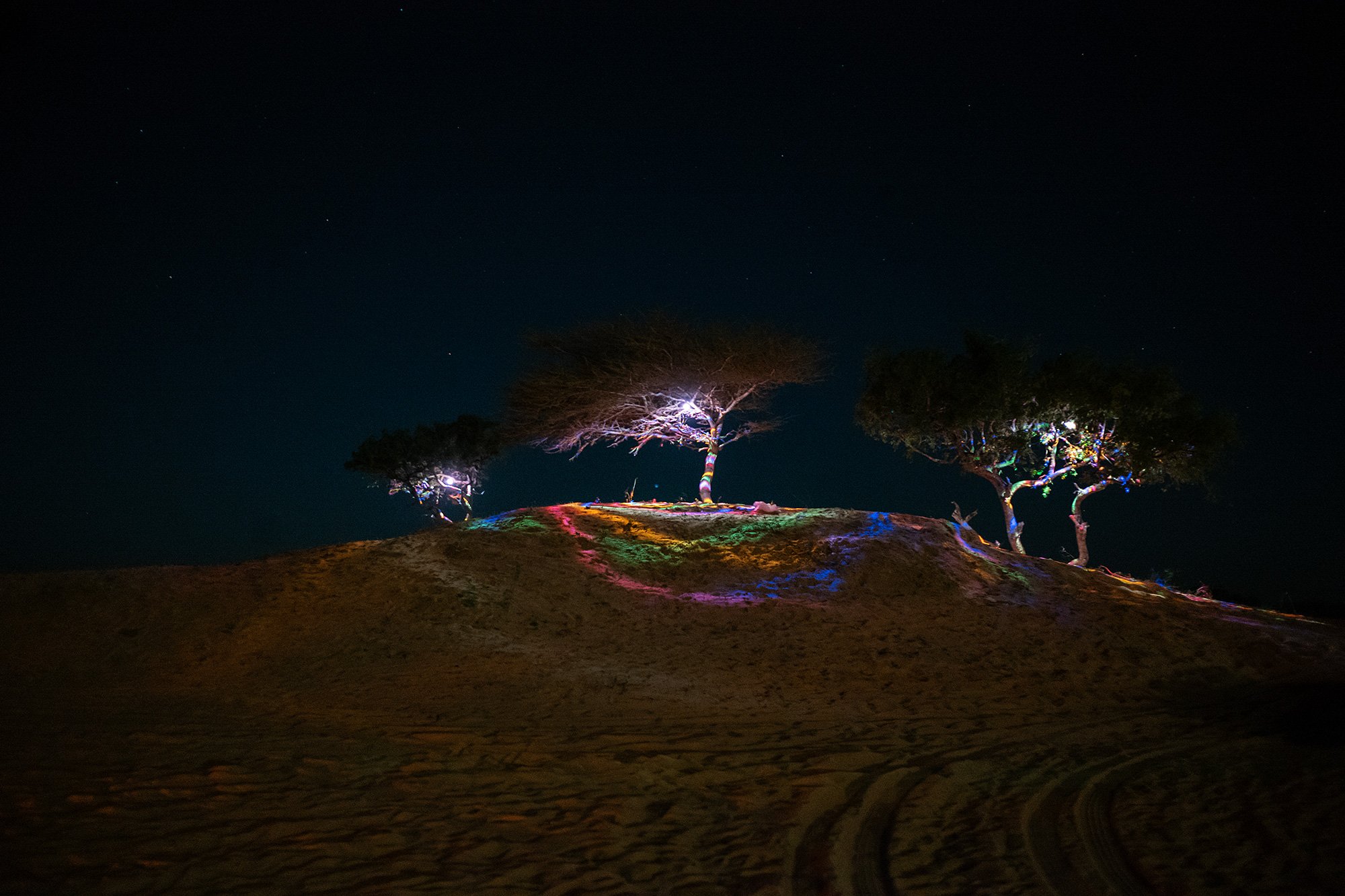
Senegal chapter three
Djoudj Bird Sanctuary, Saint Louis, and the Lompoul desert.
I am the first one at breakfast. It’s a solemn affair. Breakfast is laid out, plates covered with plastic, juices, hot water and coffee. The lighting is electric and harsh, but dim. I gather fruit, some bread, hot water, and juice. I pour a glass of jus de ditakh, made from the fruits of a local tree. I try it for the first time. It’s a little grainy, but very tasty.
A French man comes in for breakfast. We exchange pleasantries and he sits at a table. The attendant brings him food. He eats and departs.
After breakfast I gather my things and check out. I decided to sit on the terrace of the hotel to wait for the Italians and for Amadou to watch the pre-dawn goings on. Amadou texts; he’ll be 15 minutes late. I leave my bags to take a photo of the bridge; the sunrise lies just beyond the horizon.

When Amadou arrives we load the van and head north towards the Djoudj National Bird Sanctuary. The sun is coming up and the island awakes to the soft morning light. Along the way, he points out a peanut farm and a herd of cows. Among other things, he tells us they use the cow’s manure to fertilize the soil. We stop to take a look at the herd; a woman comes out of her home and cautions us against getting too close. I ask Amadou how much a cow like this would cost. $1,000US, he tells me.




We arrive at the bird sanctuary and Amadou alights to take care of paperwork and our tickets. He points out the rest rooms and we wander the grounds while we wait. Behind us various drivers and guides arrive with their guests and follow the same routine.
Once settled, we get back in the van to drive further into the sanctuary. Warhogs watch our progress from the side of the road, seemingly unpreturbed by our presence.
We arrive at a river, where a large boat is waiting for us. It’s almost completely filled but they find space for us in the back. Cars and buses are strewn along the side of the road.

The boat departs and we begin our cruise down the river. Each group has their own local guide who points out the birds as we pass their roost or fly overhead, but they all seem to follow the lead of one particularly sharp-eyed guide who leads a large French group. I can’t help but smile every time I hear the French guide’s voice and look to where he’s pointing followed in quick succession by our guide and the others. I begin to train my ear to the French guides’s voice.


As the sun continues to climb the sky, the day gets hotter. The boat is covered, though the effectiveness changes depending on the angle of the boat. We continue to wind our way up the river until we spot a huge commotion in the distance. It’s a massive colony of pelicans feeding in the water. As we approach we see more perched on the shore.
As the boat approaches the pelicans in the water and they make way for us until we are surrounded. Pelicans fly overhead; in the river, their feet churn the waters. We watch as they dive together to feed, their heads disappearing, their tails in the air. It’s like a Busby Berkeley routine played out before us by nature.






The guides point to the shore. There are babies amongst the adults, smaller darker shapes hidden between the larger white bodies protecting them. There must be thousands of birds collected on the shore.
We turn around and head back towards the dock. The river is quiet; all of the pelicans seem to have returned to the shore. We spot fewer birds on the way back. The day has gotten hot and most of the birds hide in the shade of the brush surrounding the water.
At one point a guide asks the boatsman to navigate closer to the lilies that grow throughout the river. He plucks a flower and has us pass it around to appreciate its scent. One guide ties the stem into a bracelet of sorts and hands it to one of his guests.



When we return to the dock, it is full of people anxious to board the boat. Cars and buses line the road. I tell Amadou I’m glad we left early to beat the crowd. Being on the first boat was perfect. I appreciate his planning.
We drive back to Saint Louis. Amadou asks us if we’d like to have lunch at the hotel or someplace else; I ask for someplace else just to see a little more of the town. He takes us to a bright restaurant attached to a small hotel just north of where we stayed. I order my first grilled thiof, a white grouper; it’s delicious.
When we’re done we meet Amadou outside the restaurant. He’s arranged a horse and carriage to take us on a tour of the island. Our guide points out the various homes and the differences in construction between French, Portuguese, and local (wood) buildings. He asks us if the city reminds us of any other place we may have visited. I tell him it has a bit of a New Orleans feel. He nods and tells us that some also find that it reminds them of Havana. It’s my turn to nod.




Established as the first French chartered company on the Atlantic coast of Africa in 1659, the island of Saint Louis became the hub of European traders traveling up the Senegal river in search of slaves, gold, leather, and other products. It remained the political capital of the colony and of French West Africa until 1902, and was the capital of Senegal and Mauritania until 1957, when the capital was moved to Dakar. In 2000 the island of Saint Louis was named a UNESCO World Heritage Site
The guide takes us north first, through the French quarter where he points out the balconies and terraces that are a common feature of the architecture. He tells us that the façades are all protected and that they were made of bricks once made locally in the area. Now, there are people who are cheating on the construction; the bricks are expensive, and many buildings are in disrepair. However, since the UNESCO designation a number of buildings have been selected to be renovated.


At the north end of the island we stop by a steam crane, once used to unload cargo from boats onto the island. Across the water we can see a fishing village that sits on a narrow strip attached to the mainland. From there we turn down another road and head back south, passing more examples of the local architecture until we reach the midpoint of the island.
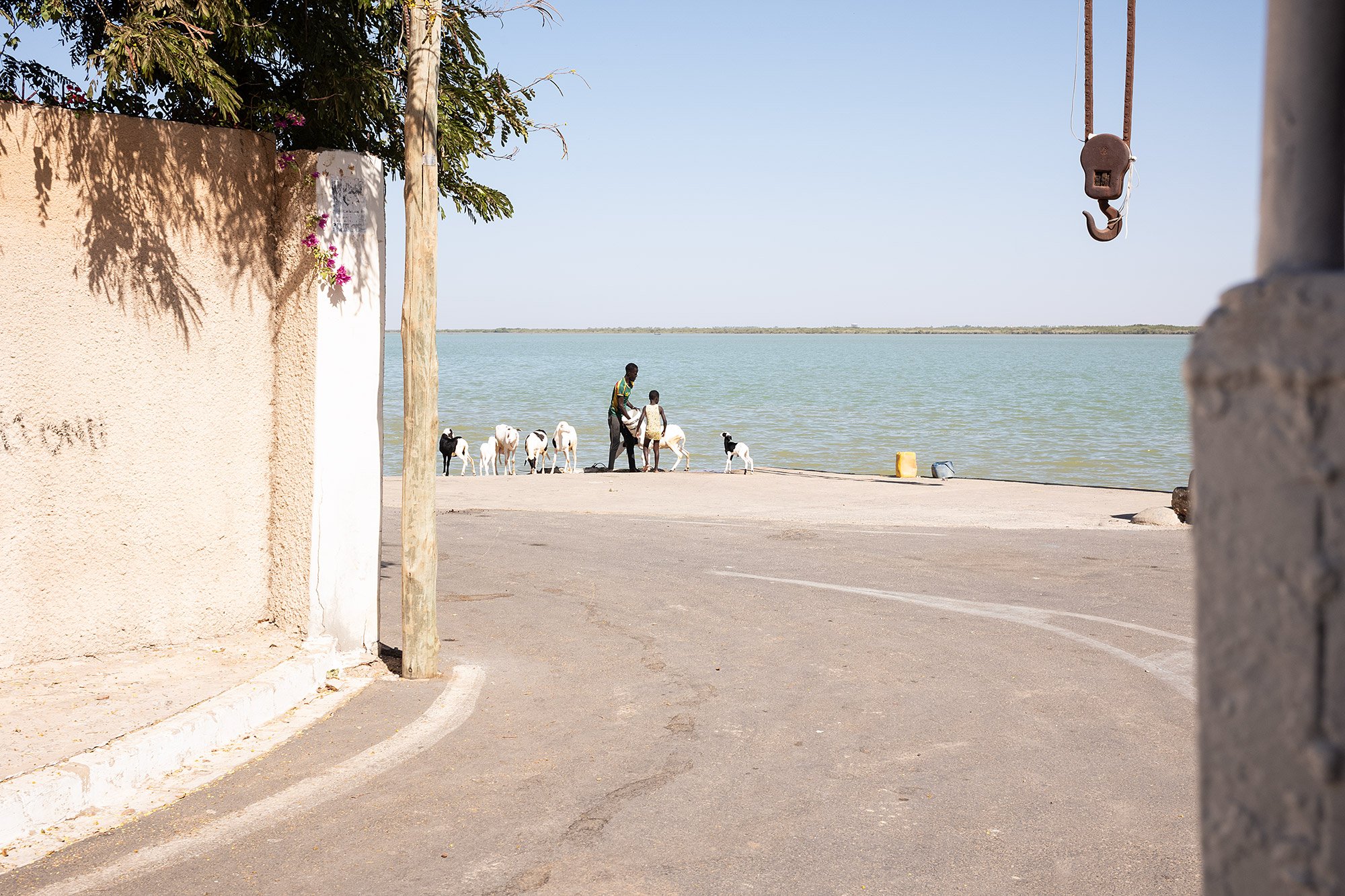


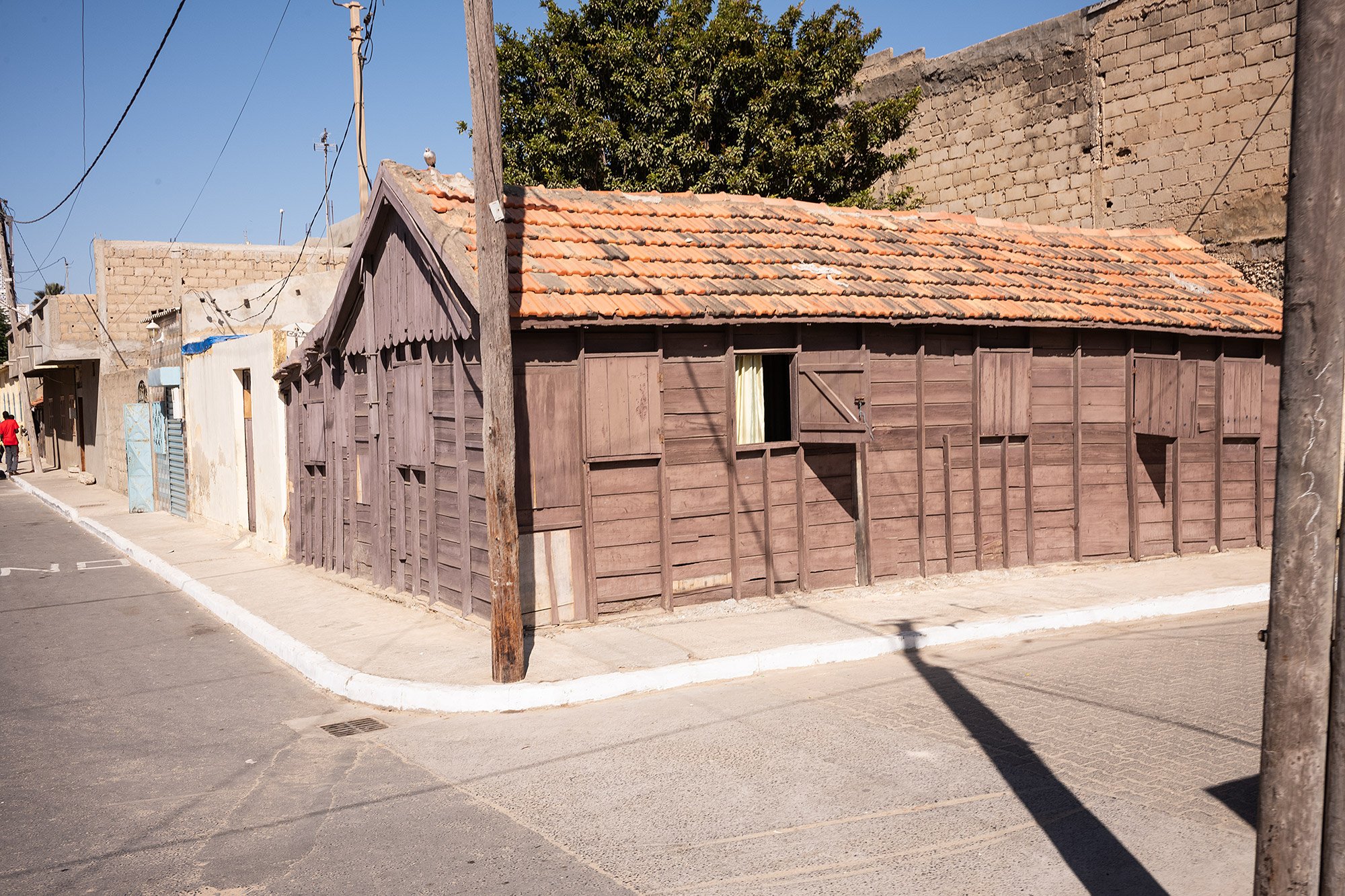
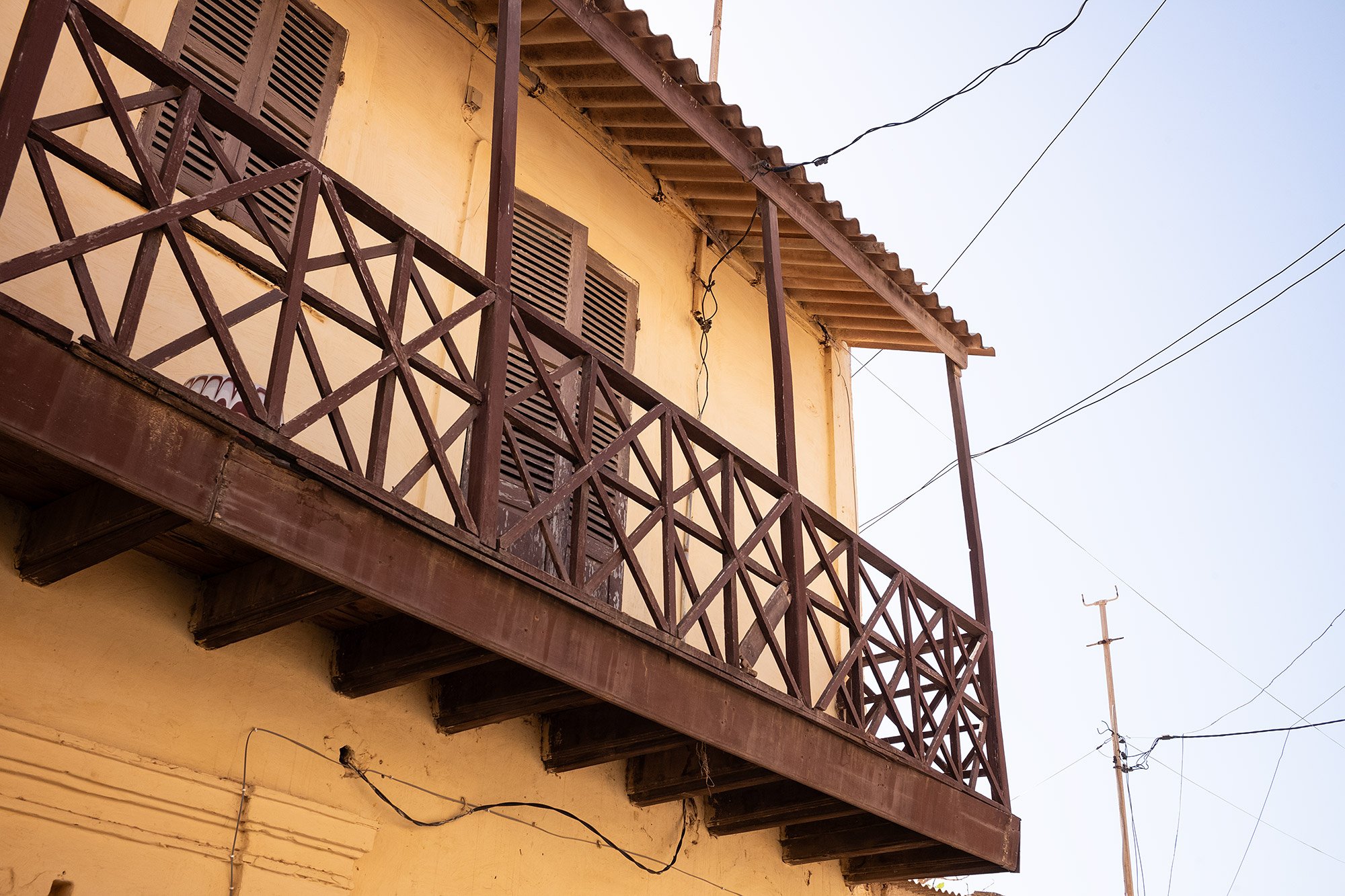
A bridge reaches from the island to the cape upon which the fishing village sits. The driver asks us to alight before he drives the carriage across the bridge. We cross the bridge and emerge in a markedly different world.
We rejoin the carriage and slowly ride south, passing a celebration honoring the birth of a new child. A tent has been set up and people beat a rhythm on pots and pans.

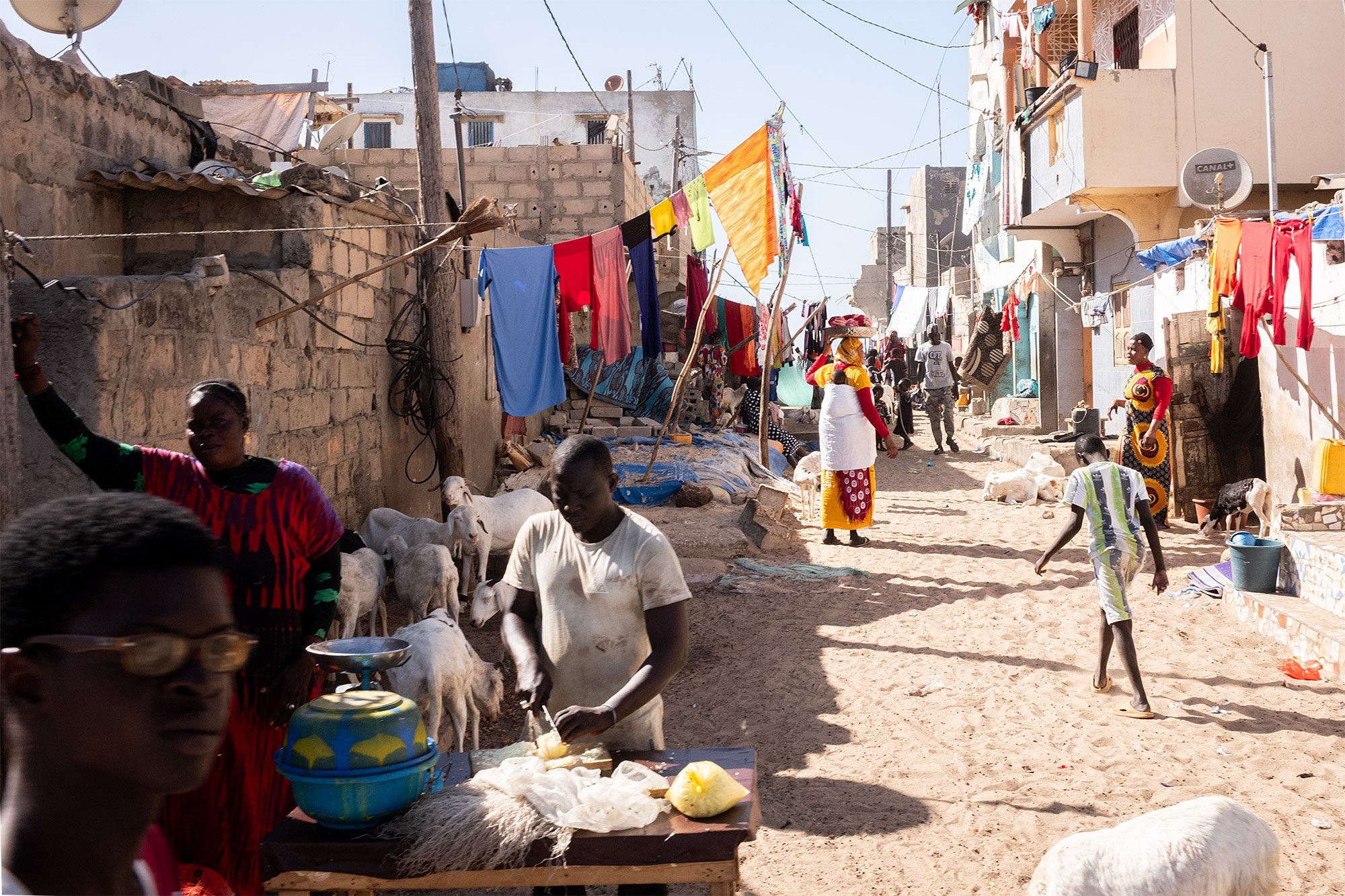

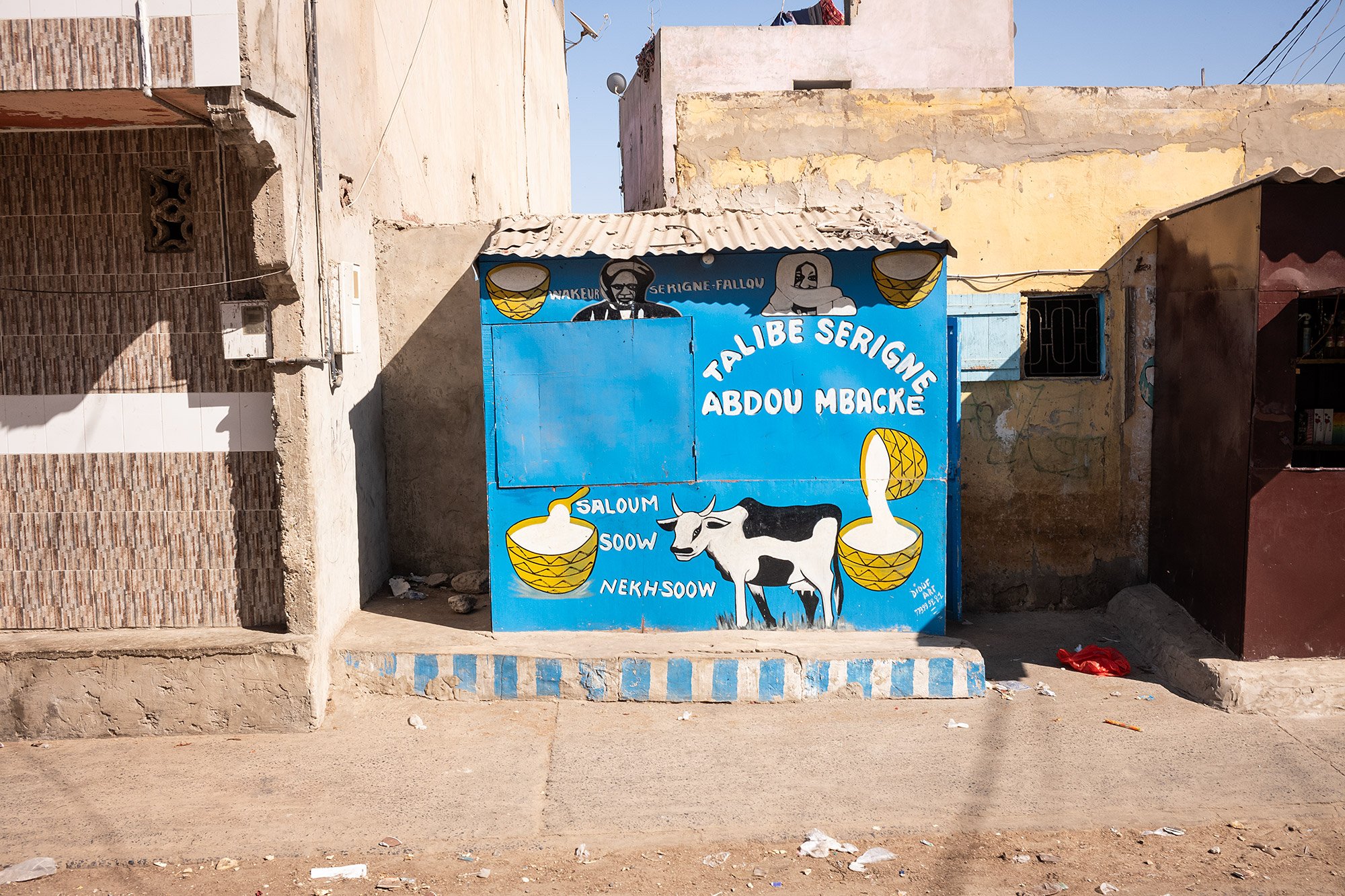
At one point the guide has us alight and guides us through a narrow alley to the sea. A vast beach and expanse of ocean await us on the other side. Boats dot the landscape. Children play upon them; fishermen repair nets in the shade of them. A large group of people await incoming catches, to buy and to sell the fish that will be brought in.



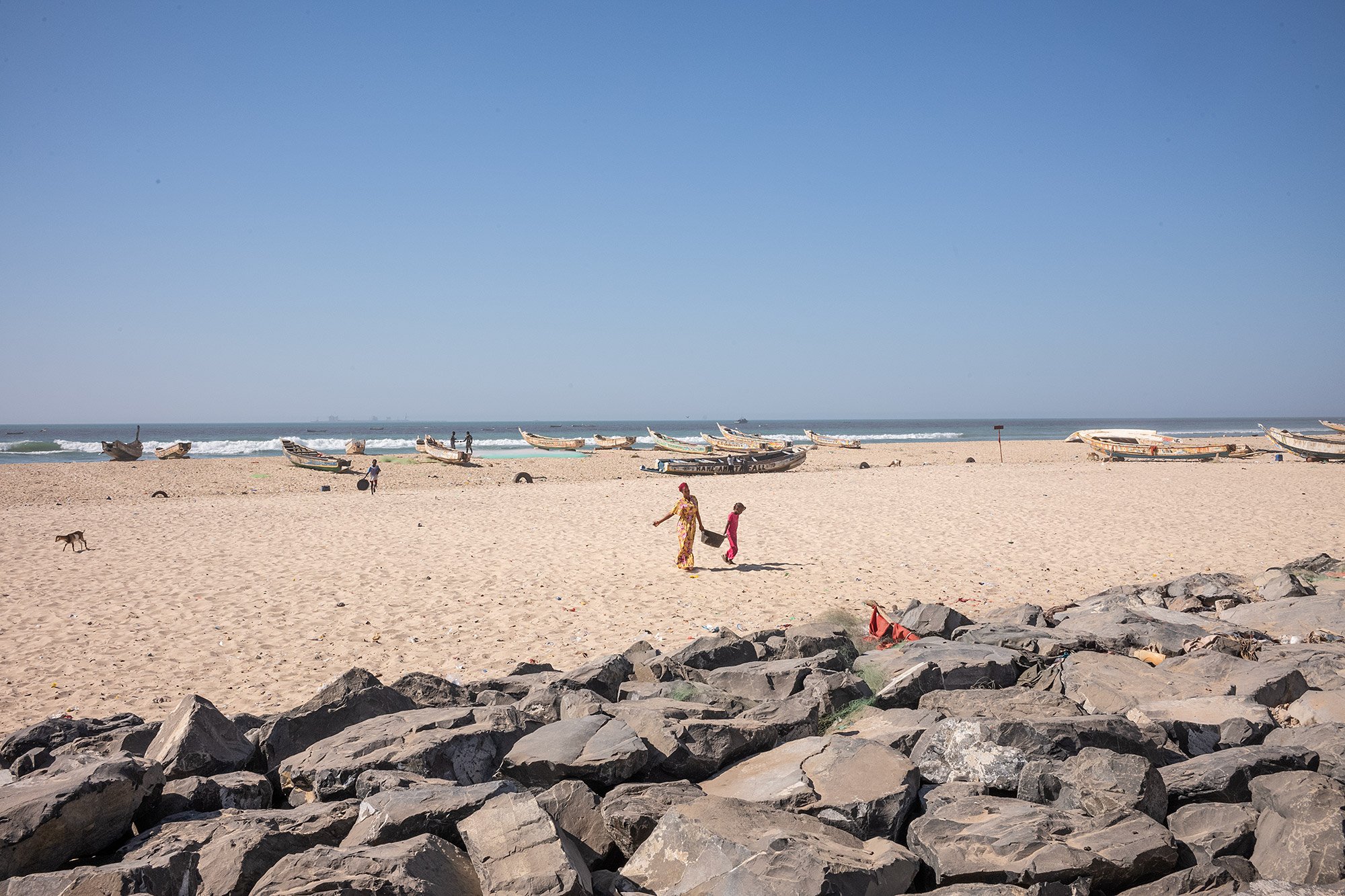

We walk along the beach, between boats and fishermen and the women waiting for them. I step towards the ocean and place my palms against it, to feel the cool water run over my hands. I turn to look back at the boats and the people on the shore and the waves run over my feet, soaking my shoes. Roberta has come to join me and cries out, dropping her phone as she rushes away from the surf. I remain crouched, take photos of the scenes before me.







Walking back to the carriage our guide takes us past a small market. The floor is wet, the baskets covered. A small group trades. Across the street, a seller stands amongst towers of woven baskets ready to be sold.
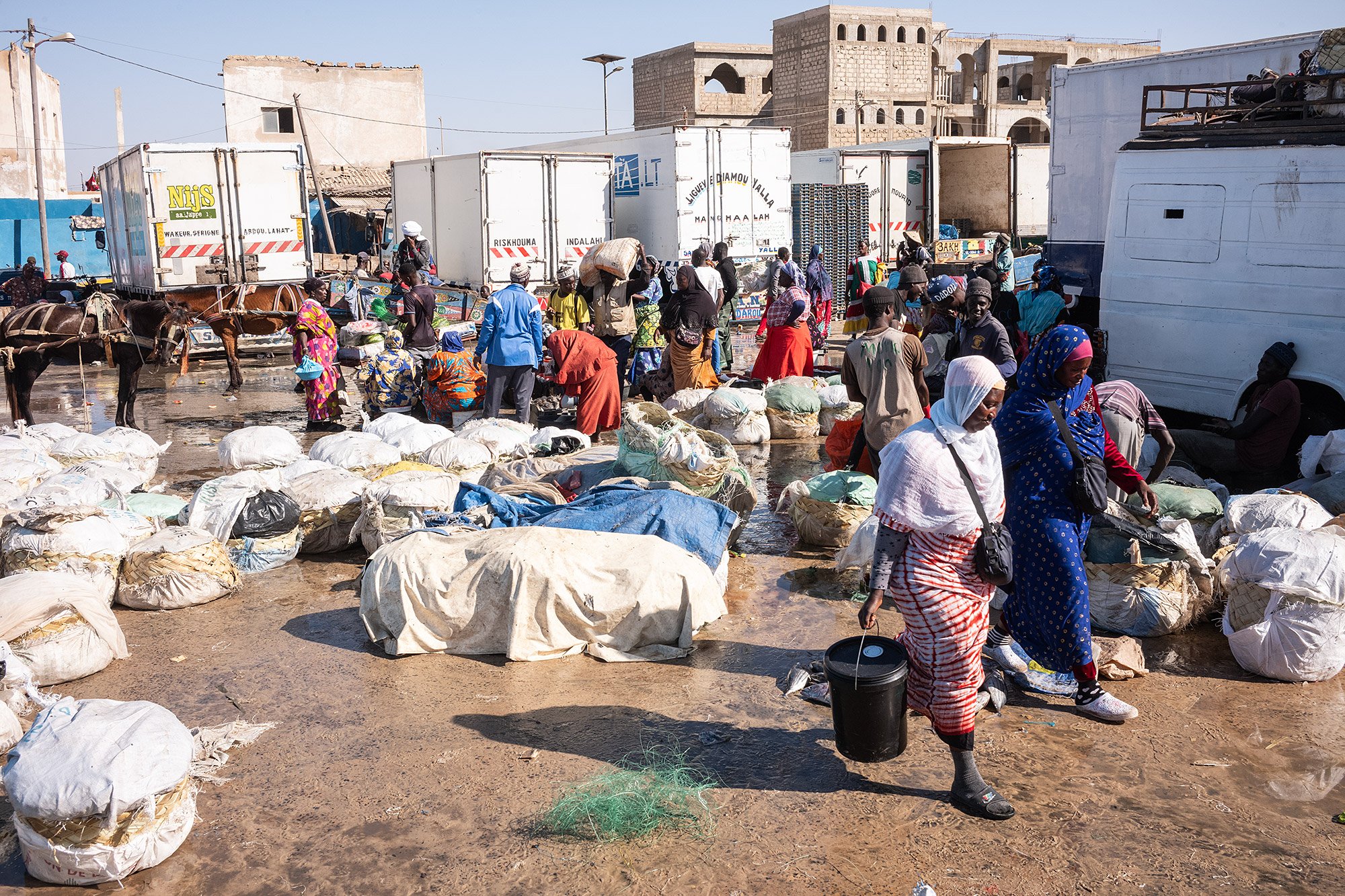

I take my shoes off in the carriage and the guide suggests I dry my socks on the roof. It’s a great idea and I toss them upon the tarp.
We make our way back north on the inland coast. Here, boats are jammed cheek by jowl on the shore. Outboard motors are stored by the side of the road. Fisherman and children crawl over the boats, inspecting them, repairing nets. There’s constant motion; there’s always work to do.



Crossing the bridge back to the main island we get a view of the boats in the bay. I marvel at the sheer number of them. You could walk from boat to boat all long the cape seemingly to the end without ever having to touch the water or the land.
Children float on sacks filled with air by the bows of the boats. Our guide points them out. For those who can’t swim, he says.

On the island, our carriage travels the southern end. It’s a lot quieter here. Our guide tells us that while the northern part of the island was devoted to the military, here it’s mostly administrative buildings dominated by Portuguese construction.
We pass a few museums and I lament that we’re not spending another night. I’d love to leisurely walk the path we’ve made and check out the museums. But the carriage moves on and so do we.
At one point the guide points out a small statue commemorating Louis Mbarick Fall, a boxer born in Saint Louis who briefly reigned as the World light heavyweight champion. Serving in the 8th Colonial Infantry Regiment for the French army during World War I, he was decorated for bravery in battle with the the Croix de Guerre and the Médaille Militaire. He was murdered in New York at 28 and initially buried in Flushing Cemetery before being repatriated to Senegal in 1993.




The carriage leaves us at the Faidherbe Bridge. My socks have disappeared. Amadou tells us he had originally intended to take us to a local market, but feels our time would be better spent leaving now to drive to Lompoul; he doesn’t want us to miss seeing the sun set in the desert.



We drive south a few hours and then stop by the side of the road. There’s an open four-wheeled truck waiting for us. We climb into the back along with French-Congolese family currently living in Côte d'Ivoire and a father-daughter from San Sebastián for the ride to the camp itself.
The camp is large and the tents are surprisingly well-appointed. I had anticipated sleeping on rugs on the desert floor with basic amenities, but the tents have beds, showers, and western toilets. It’s luxury that far exceeds that for which I had prepared myself.
I drop off my bags and wander to the welcome tent for a cold glass of juice. Amadou tells me it’s time for our camel ride, another thing I hadn’t anticipated. He walks us over a dune and we see a couple of herders with four camels waiting for us.
Along the way we pass two people working on a wire. Amadou offers to help them and tells me that he studied to be an electrician himself. He tells me he’s had a lot of jobs; he’s always been hustling. I ask him how he became a guide. He tells me he met two Canadians when he was selling items on the street and they asked him if he could help them arrange a tour of the country. They gave him their Lonely Planet and he arranged everything for them. He’s been doing it ever since. He tells me it’s his favorite job.



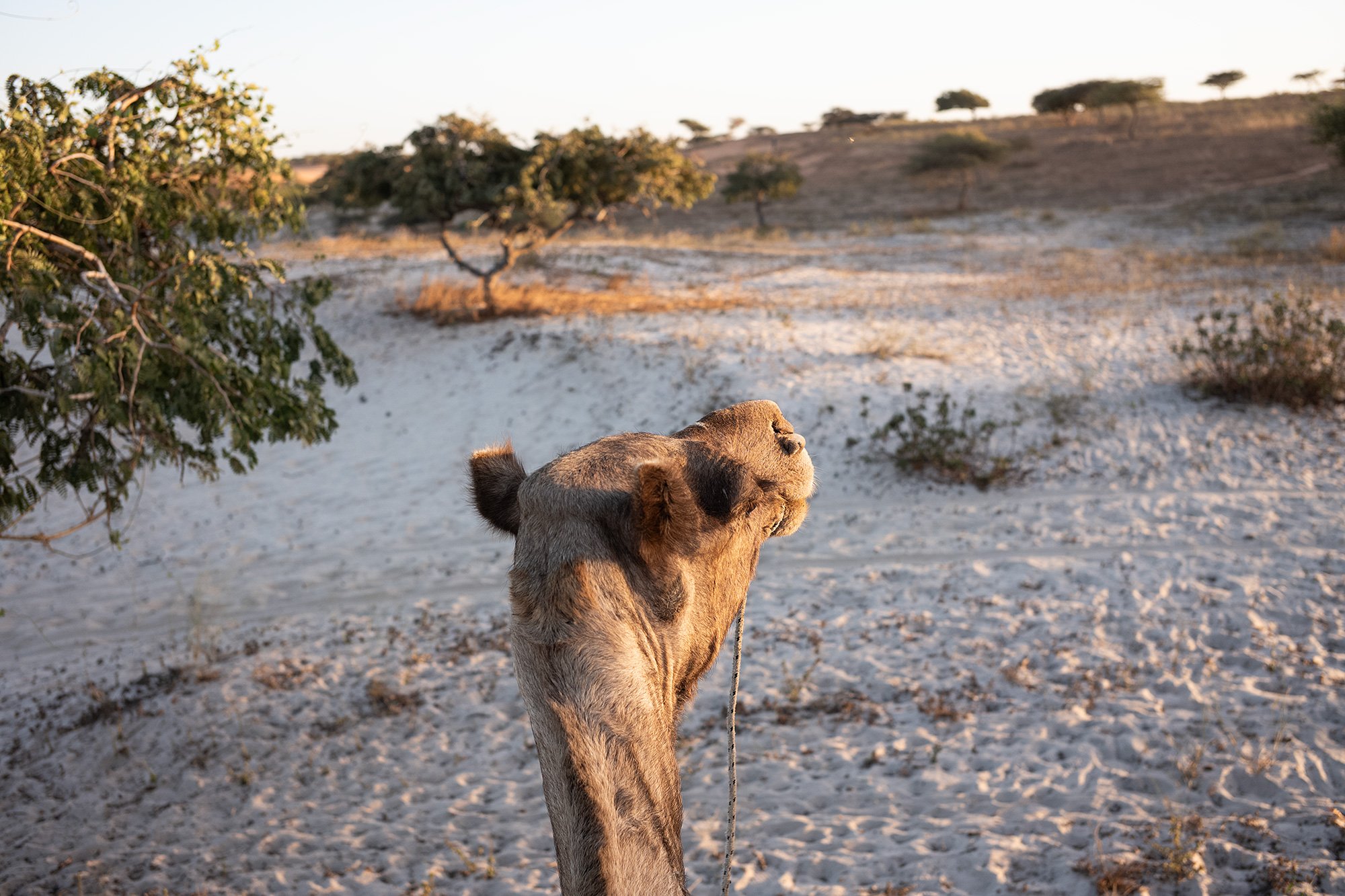

Back at the camp I climb a small hill to get a better view. Letitia is already there and it’s there that I learn who they are and where they’re from. She asks what brought me to Senegal and I tell her it’s been a dream of mine since I was in high school. She asks if I’m working in Dakar and I tell her about my job and nomadic life.
They’ve been living in various countries themselves. It’s something her husband had told her he was interested in doing when they first met, and their on their third or fourth country.

I watch the sunset from another dune. I sit on the soft ground, run the sand through toes.



On walking back to the camp I meet Letita’s husband and we sit and chat about our past and plans for the future as the desert darkens around us. Dinner is served in the mess tent: lamb and chicken with a Senegalese soup, vegetables, and cous cous served out of a tagine. It’s a simple meal but tasty, the soup especially so. Outside, two children play a game of soccer. Letitia’s boy is obsessed with it. He’s brought a ball and will play any chance he gets. The moon rises over my tent.

A bonfire is lit after dinner and a group of musicians gather around it. I stop by to listen for a spell before making my way back to my tent. Lights have been set up in the trees on a dune that overlooks our camp and they spin patterns upon the ground as they play.
I shower by the light of the moon and crawl into bed. It’s been a long, active day, and I’m happy to be able to lie down, freshly showered in clean sheets. Music plays into the night.
28 December 2023
🇸🇳
